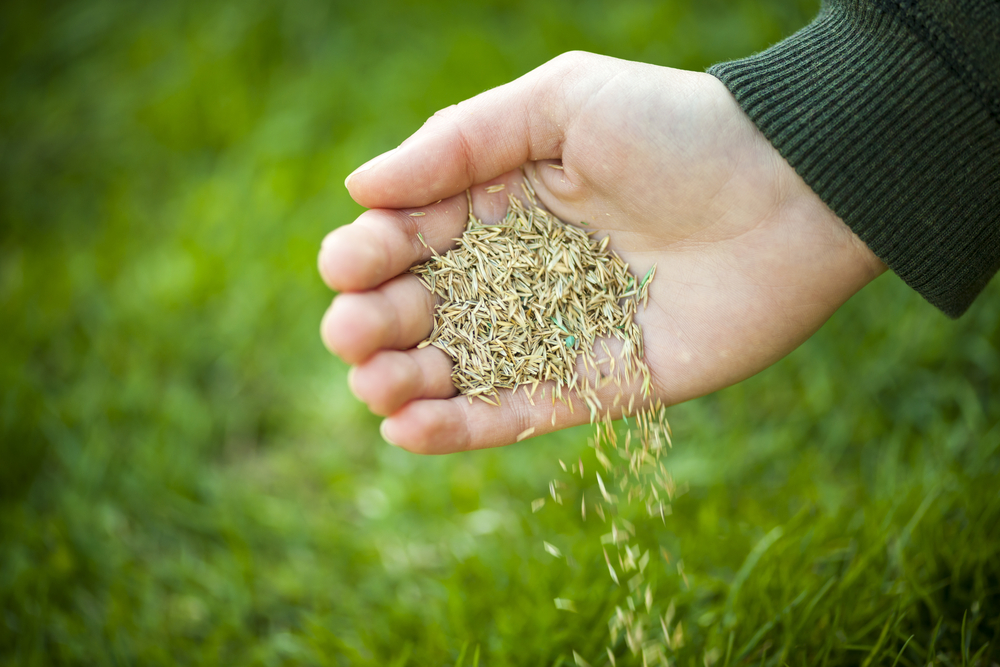Choosing the Best Grass Seed for Your Climate and Soil Type

Selecting the right grass seed for your lawn is crucial for achieving a lush, healthy, and vibrant lawn that thrives in your specific climate and soil conditions. With numerous grass seed varieties available on the market, each tailored to different climates and soil types, it’s essential to understand your local environment and choose the best grass seed accordingly. In this guide, we’ll explore the factors to consider when selecting grass seed for your lawn and provide tips for choosing the best grass seed for your climate and soil type.
Understanding Your Climate
Climate Zones
Before choosing grass seed for your lawn, identify your climate zone to determine which grass species are best suited to your area. Climate zones are typically categorized based on factors such as temperature, precipitation, and frost frequency, and each zone has specific grass seed recommendations.
Warm-Season Grasses
Warm-season grasses, such as Bermuda grass, Zoysia grass, and Bahia grass, thrive in hot and humid climates with long summers and mild winters. These grasses are well-suited to southern regions and require less water and maintenance compared to cool-season grasses.
Cool-Season Grasses
Cool-season grasses, such as Kentucky bluegrass, tall fescue, and perennial ryegrass, prefer cooler temperatures and moderate moisture levels. These grasses are ideal for northern regions with cold winters and warm summers and exhibit excellent cold tolerance and year-round greenness.
Assessing Your Soil Type
Soil Composition
Evaluate your soil type to determine its composition, drainage properties, and nutrient levels, as these factors influence grass seed selection. Common soil types include sandy, loamy, and clay soils, each with unique characteristics that affect grass growth and development.
Sandy Soils
Sandy soils are well-draining but tend to dry out quickly and have low nutrient retention. Choose grass seed varieties, such as Bermuda grass or Bahia grass, that are drought-tolerant and can thrive in sandy soils with minimal water and fertilizer requirements.
Loamy Soils
Loamy soils are a balanced combination of sand, silt, and clay particles, offering good drainage and nutrient retention. Most grass species perform well in loamy soils, but consider factors such as sun exposure and traffic tolerance when selecting grass seed for your lawn.
Clay Soils
Clay soils are heavy and dense, with poor drainage and a tendency to compact easily. Choose grass seed varieties, such as tall fescue or Kentucky bluegrass, that have deep root systems and can tolerate heavy clay soils with adequate moisture management and soil amendment.
Choosing the Right Grass Seed
Consider Grass Species
Select grass species that are well-adapted to your climate and soil conditions, taking into account factors such as temperature tolerance, drought resistance, disease susceptibility, and maintenance requirements. Consult with local experts or extension offices for recommendations on grass species suitable for your area.
Choose Grass Seed Blends
Consider using grass seed blends or mixtures that combine multiple grass species to maximize diversity and resilience in your lawn. Blended grass seed mixtures can offer benefits such as improved pest and disease resistance, enhanced drought tolerance, and year-round color and texture.
Read Seed Labels
Carefully read grass seed labels to understand the species and varieties included in the mix, as well as important information such as seed purity, germination rate, and weed seed content. Choose high-quality grass seed from reputable suppliers to ensure optimal performance and results.
Planting and Maintenance Tips
Prepare Your Soil
Before planting grass seed, prepare your soil by removing debris, loosening compacted areas, and incorporating organic matter such as compost or aged manure to improve soil structure and fertility. Conduct a soil test to assess nutrient levels and pH and make any necessary adjustments.
Follow Planting Guidelines
Follow planting guidelines for your selected grass seed, including recommended seeding rates, planting depths, and timing based on your climate and growing season. Ensure proper seed-to-soil contact by raking or rolling the seed into the soil surface and water thoroughly after planting.
Provide Adequate Care
After planting grass seed, provide adequate care and maintenance to promote germination and establishment. Keep the soil moist but not waterlogged, and avoid heavy foot traffic on newly seeded areas. Monitor your lawn regularly for signs of pests, diseases, or nutrient deficiencies and address any issues promptly.
Conclusion
Choosing the best grass seed for your climate and soil type is essential for establishing a healthy and resilient lawn that thrives year-round. By understanding your local climate, assessing your soil type, and selecting appropriate grass species and varieties, you can create a beautiful and sustainable lawn that enhances your outdoor space. With proper planting and maintenance practices, your lawn will be the envy of the neighborhood and provide enjoyment for years to come.
Need Landscapers in Upstate NY?
Welcome to Rand Hill Lawns, Inc.! We are a family-owned and -operated business that has served the Plattsburgh community since 1986. We are your go-to lawn care consultants! Whether you need landscaping, snow removal, excavating, paving, tree removal, stump removal, or fertilizer, we can do it all. We will not stop working until we get the job done for you! We are licensed and have 30 years of experience in lawn care services. Contact us today for a free estimate!
Categorised in: Grass
